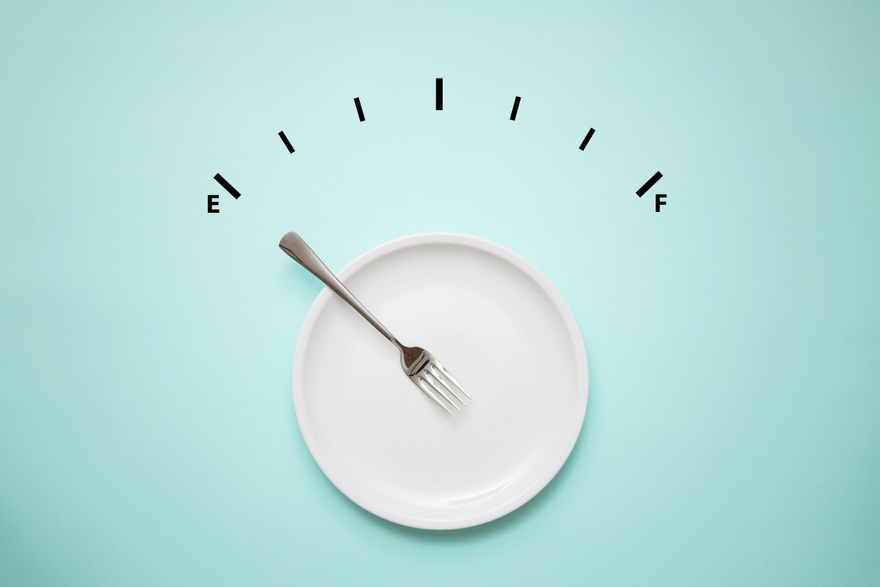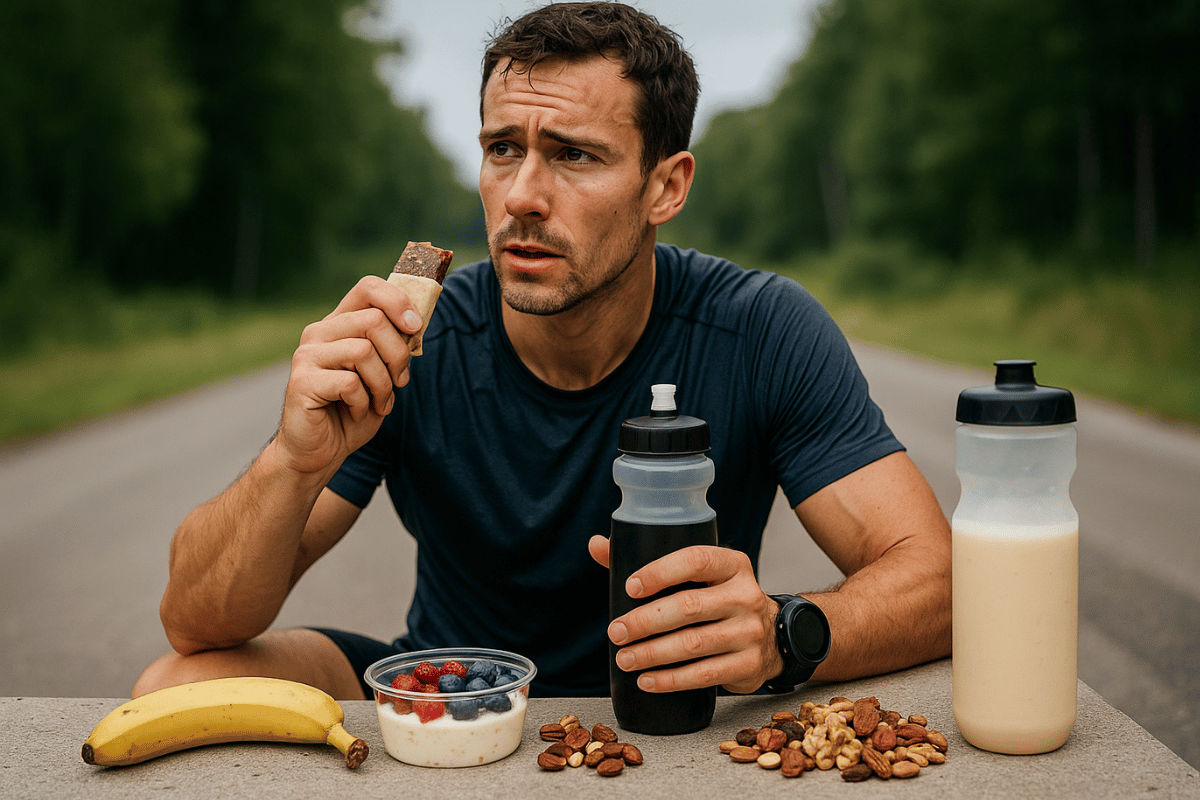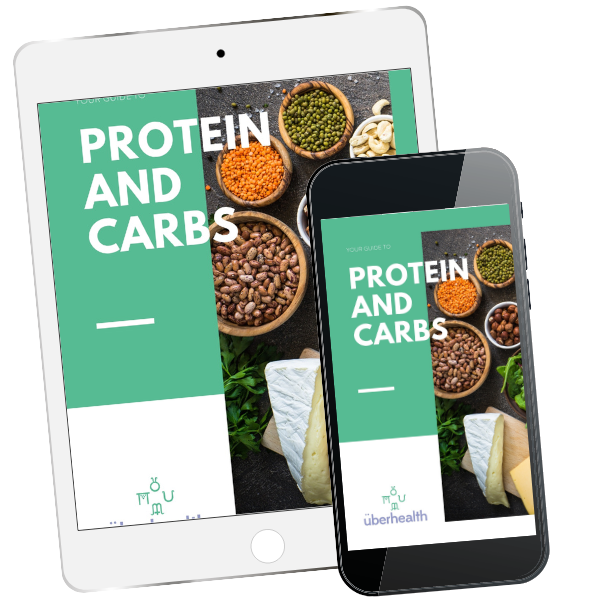Low Energy Availability (LEA) & RED-S: Why Chronic Underfueling is More Common Than You Think

When we think of energy for performance, most athletes focus on how to fuel their training session:
What gel should I take?
Do I need protein after?
Am I consuming enough carbs?
But there’s a bigger picture question that often goes unasked: Am I eating enough to cover my total daily energy needs for training AND life?
When the answer is “no,” it sets the stage for a condition called Low Energy Availability (LEA).
Over time, LEA can evolve into Relative Energy Deficiency in Sport (RED-S), a broader syndrome affecting nearly every system in the body.
This isn’t just an elite athlete problem. I see it in age-group triathletes, runners, cyclists, recreational CrossFitters, and even weekend warriors - anyone training hard without matching their energy intake.
Let’s break down what LEA and RED-S are, why they matter, and how to spot (and prevent) them.
What is Low Energy Availability (LEA)?
Energy availability is the energy left over for your body’s basic functions (hormone production, bone turnover, immunity, recovery) after you’ve accounted for training.
In simple terms: Calories eaten – calories burned in exercise = energy available for health
- Optimal energy availability: ~45 kcal/kg fat-free mass/day
- Low energy availability: <30 kcal/kg fat-free mass/day (often unintentional)
When energy availability stays low for too long, the body begins to down-regulate systems to conserve energy leading to hormonal, metabolic, and immune consequences.
From LEA to RED-S
RED-S (Relative Energy Deficiency in Sport) is the clinical syndrome that results from prolonged LEA. Originally described as the “Female Athlete Triad,” RED-S now includes males, females, and athletes of all ages.
Systems affected by RED-S:
- Hormonal: Irregular or absent menstrual cycles, low testosterone
- Bone health: Increased risk of stress fractures and osteoporosis
- Immune system: Frequent illness, slow wound healing
- Metabolic: Decreased resting metabolic rate, fatigue
- Performance: Reduced endurance, strength, coordination, recovery
- Psychological: Mood swings, irritability, anxiety around food or weight
RED-S Is Not Just About “Eating Disorders”
While RED-S can overlap with disordered eating, most athletes I see with LEA aren’t deliberately restricting. Often it’s unintentional:
- Busy schedules = missed meals
- Underestimating calorie needs on heavy training days
- Over-reliance on “clean eating” or low-carb trends
- Misunderstanding the difference between weight loss and performance fueling
This is why education about RED-S for both for athletes and practitioners is crucial.
Signs and Symptoms of LEA / RED-S
For Athletes:
- Persistent fatigue not explained by training load
- Missed or irregular periods (females)
- Low libido or reduced morning erections (males)
- Recurrent injuries or stress fractures
- Getting sick often or slow to recover from colds
- Plateaued performance despite hard training
- Feeling cold, brittle nails, hair loss
For Practitioners:
- Monitor weight fluctuations, training load vs energy intake
- Track menstrual cycle and hormonal markers
- Watch for mood changes or obsessive food/exercise behaviours
- Consider screening tools: LEAF-Q, RED-S CAT (clinical assessment tool)
Consequences if RED-S is left Unchecked
Prolonged RED-S can lead to long-term health consequences:
- Reduced peak bone mass → higher osteoporosis risk later in life
- Persistent hormonal dysfunction (fertility issues, low testosterone)
- Immune suppression and chronic fatigue
- Increased injury risk and burnout
And in the short term, performance tanks because you can’t race your best when your body is in energy debt.
Prevention and Management
1. Energy Awareness
Understand your baseline energy needs, not just training calories. Many endurance athletes require 2,500–3,500+ kcal/day, sometimes more during peak weeks.
2. Fuel Early and Often
Don’t delay meals post-training. Prioritise carb + protein recovery snacks and distribute energy evenly across the day.
3. Avoid Fasted Training (If at Risk)
While strategic fasted sessions can have benefits, they’re not for everyone, especially if you’re already low on energy.
4. Track Menstrual or Hormonal Health
For females: cycle regularity is a key performance marker.
For males: libido and morning energy can provide clues.
5. Work With a Practitioner
Dietitians, sports nutritionists, and medical professionals can help assess energy availability, run relevant blood tests (ferritin, vitamin D, hormones), and guide safe recovery.
6. Education for Coaches and Support Teams
RED-S awareness should extend beyond athletes to coaches, trainers, and even family members play a role in spotting red flags.
Nutrition Strategies for Recovery from LEA/RED-S
- Increase total energy intake gradually (focus on energy-dense foods)
- Prioritise carbohydrates for training fuel and glycogen replenishment
- Adequate protein for muscle repair (1.6–2.2g/kg/day)
- Include healthy fats for hormone production (avocado, nuts, oily fish)
- Don’t fear snacks: energy balls, smoothies, dried fruit and nuts are convenient
- Support with micronutrients: iron, calcium, vitamin D, magnesium
For Practitioners: Clinical Considerations
- Screen with LEAF-Q (females) or RED-S CAT (all athletes)
- Order labs: CBC, ferritin, vitamin D, thyroid, sex hormones
- Collaborate with multidisciplinary teams (coach, physio, psychologist)
- Monitor return-to-play and ensure energy balance restoration before resuming high-volume training
Key Takeaways
- LEA and RED-S can affect any athlete, not just elite or aesthetic sports.
- The goal isn’t just more calories, but adequate energy availability for training and life.
- Early recognition and intervention prevent long-term health and performance consequences.
- Nutrition, training load, and recovery strategies must work together for sustainable performance.
Learn More About Fuelling for Endurance & Performance
Understanding LEA and RED-S is just one piece of the endurance nutrition puzzle. To dive deeper into balanced fueling, recovery strategies, and performance nutrition planning, explore my Fuelling for Endurance guidebook.
Inside you’ll find:
- How to match energy intake to training load
- Recovery frameworks and nutrient timing
- Micronutrient considerations for endurance athletes
- Practical tips for meal planning and race fueling
FREE RESOURCE



